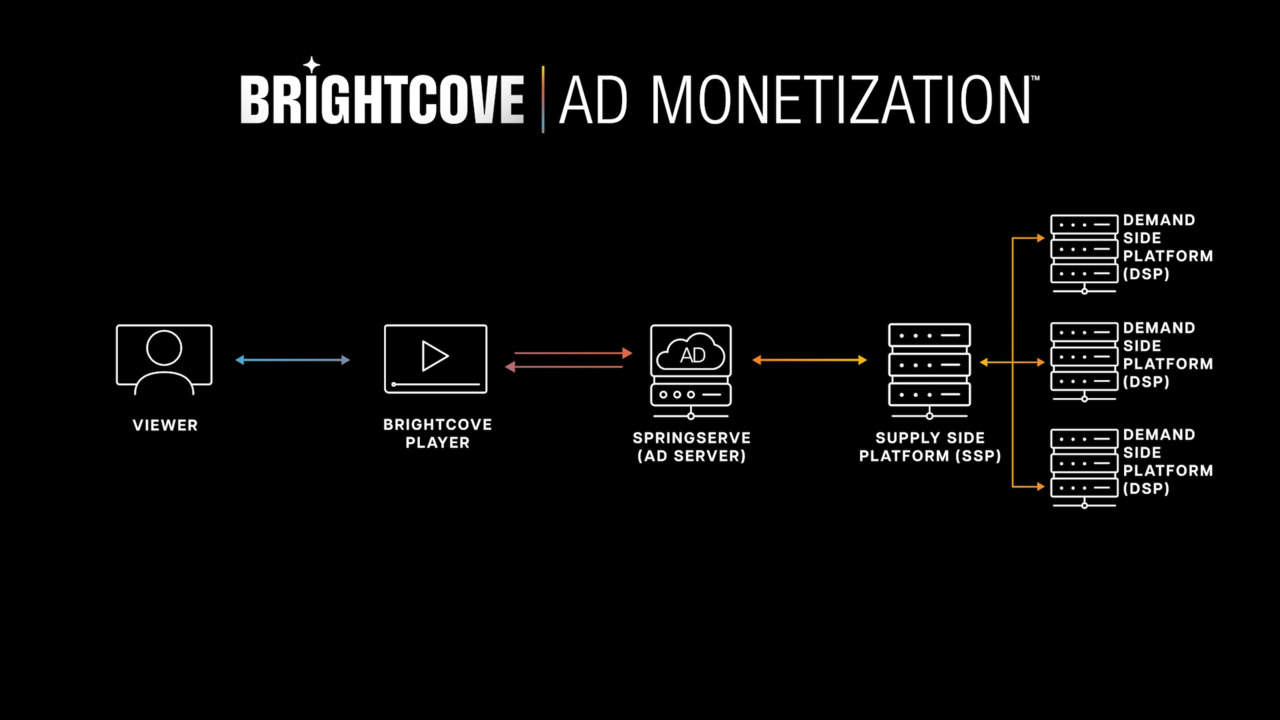Launching Your Own OTT? Things You Need to Know
Media

No matter how you measure it, the OTT streaming market is growing across every segment, from D2C brands to broadcasters and publishers. According to Statista, the industry will jump from $294 billion in 2023 to $397 billion by 2027—a staggering 35% growth in just four years.
As more companies look to capitalize on this growth, launching an OTT service is becoming an increasingly attractive option. But a fundamental question faces those who embark on this endeavor: Buy or build?
Some choose to build their own technology stack because it gives them total control over their service, its features, and its road map. However, they're faced with high startup costs and navigating the complex technology requirements to make their service successful. Furthermore, building this technology from the ground up often detracts from their focus on actually growing the service. They find themselves shifting budget and resources to overcome challenges ranging from scaling to security to building an effective, compatible technology stack that serves their needs.
Others will choose to simply buy the technology for their service. This approach allows them to avoid much of the risk and complexity and can typically help them see quicker time to market. They're also able to focus on building the business instead of the technology, and will have the proven reliability from an established platform.
In short, for those looking to launch a niche, highly customized OTT platform with full control, building from scratch might be worth the time and investment. Conversely, for those looking to quickly penetrate the market and leverage established infrastructure, launching with a technology provider could be the most strategic move.
Learn more in our PLAY episode, “Have You Outgrown Your OTT Solution?”
OTT Technology Is Complex
Take a moment to appreciate the complexity of OTT technology. These are impressive systems that have managed to replicate every component along the media supply chain, and each component needs dedicated development and maintenance resources.
Just to manage and deliver video content, OTT needs content management systems (CMS), encoding and transcoding capabilities, and content delivery networks (CDN). Additional technology is also needed for both live streaming and live-to-VOD conversions.
To generate revenue, the tech needed depends on your monetization model. While Transactional Video on Demand (TVOD) may only require payment processing and customer relationship management tools (CRM), Subscription Video on Demand (SVOD) also requires subscriber management software. Ad-supported Video on Demand (AVOD) is even more complex, adding ad servers, demand- or supply-side platforms (DSP, SSP), and client-side or server-side ad insertion options.
In fact, we developed our Ad Monetization service to simplify the AVOD model for our customers. Given that it's increasingly necessary to adopt a hybrid monetization model, reducing complexity wherever possible is essential.
Consider this advice from Bleuenn Le Goffic, VP of Strategy and Business Development at Accedo: "You need to rely on external vendors to remove that complexity. You shouldn't be spending all your energy and internal investment in finding out what technology will make a video service work well."
OTT Is Supposed to Grow
Launching an OTT service isn't a casual investment; it's a substantial commitment of time, budget, and resources. This means you should be planning for ongoing growth well in advance of the service's launch.
Perhaps the most important aspect of any OTT platform development is the platform itself. If it's unable to scale, you can expect an untimely and disruptive migration. So in the early planning stages, choose a platform that aligns with your initial budget and features but is also easily scalable. Shortcuts and cost cuts may seem enticing, but if your service grows as projected, a tech revamp shortly after is the last thing you'll want.
Streaming technology has grown tremendously, to the point where media giants like Yahoo are turning to Brightcove to power their streaming. Having a solution that can grow with you, from D2C fan brands to major media companies and publishers, is key to long-term success.
OTT Depends on Content Metrics
Unlike traditional media, where metrics like total hours watched were key performance indicators, modern digital audiences require a shift in analytics. New subscribers, viewing frequency, and platform engagement can give a more accurate view of current and expected growth. And while metrics like monthly active users or total hours viewed are important, they shouldn't be the sole barometers of success.
As with other digital experiences, OTT is fundamentally about content. And in today's digital landscape where users demand more control over their viewing experience, business decisions must be driven by how they exert this control through consumption of and engagement with your video content.
Questions like, "How frequently are users engaging? How effective is the content at retaining audience attention? Does the content attract new users?" can offer valuable insights.
Furthermore, machine learning models have shown that the most valuable indicator for any video service is actually frequency of use. For example, if you have a user that watches an hour of content, it’s better for them to watch it in three 20-minute chunks over the course of a couple weeks than as one hour just one time a month.
The biggest challenge with getting actionable insights is aggregating content data with audience and service data, then harmonizing and visualizing it. Historically this has required manual data pulls and exhaustive spreadsheets, but today advanced analytics like Brightcove Subscriber Insights can quickly and easily provide a unified view of this type of data.
OTT Should Be Unique And Add Value
With so many digital content experiences for users to choose from, differentiating your OTT with a unique and valuable identity is table stakes. Le Goffic notes that, "Everyone uses the Netflix experience. This is the benchmark, the experience. But you shouldn't be Netflix. You are this brand. You are someone different."
While it's natural to learn from other successful platforms, don't try to replicate them. Your service is unique to your audience, so it only makes sense that your brand is well defined and primarily tested against the context of itself.
Rather than comparisons to other services, the focus should be more on what your brand represents and how it creates value for its community. Putting this in the context of a larger brand framework, your OTT should address questions like:
- How do you differentiate?
- What's your tonality?
- What's the personality of the brand?
- What's the archetype?
The answers to questions like these should be reflected throughout the design and experience with your app. In addition to OOTB customization options, developers using Brightcove have access to robust APIs and SDKs that give them even more control over the brand experience.
Build A Community, Not An App
Deciding whether to build or buy is a critical step that can shape the future of your OTT streaming service in terms of growth and profitability. Moreover, it will determine where you will invest the majority of your resources—in the technology that powers the experience, or in the experience itself.
Unlike traditional media, experience is pivotal to an OTT business model. The best services foster a sense of belonging, a gathering place where enthusiasts of a particular content genre or sporting event rally together to become collective fans. It's a shift in perspective from amassing viewers to cultivating a community.
Don't think of your customers as subscribers or viewers. They're members of your community. Ask yourself, "How do we nurture a community that eagerly anticipates our content? How can we bind our community in a shared experience? How do we make them want to return time and time again?"
Remember, before launching an OTT service, you still have to set your content and distribution strategy, your monetization strategy, and your marketing strategy. The right decision will enable you to craft a high-quality viewing experience that reaches your audience, builds a community, and keeps them coming back for more.



